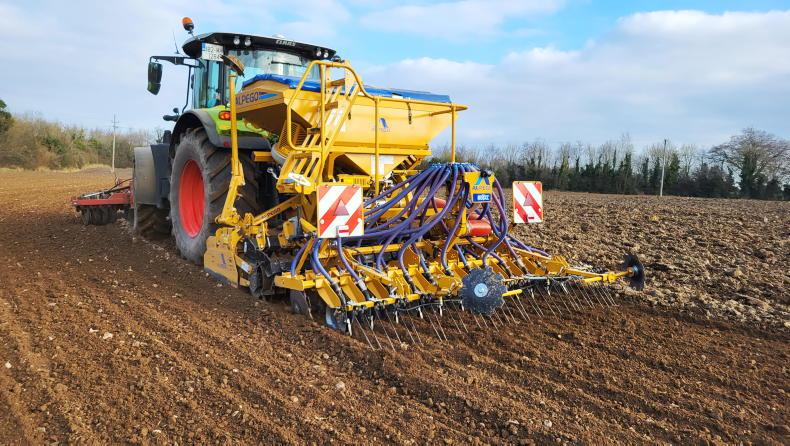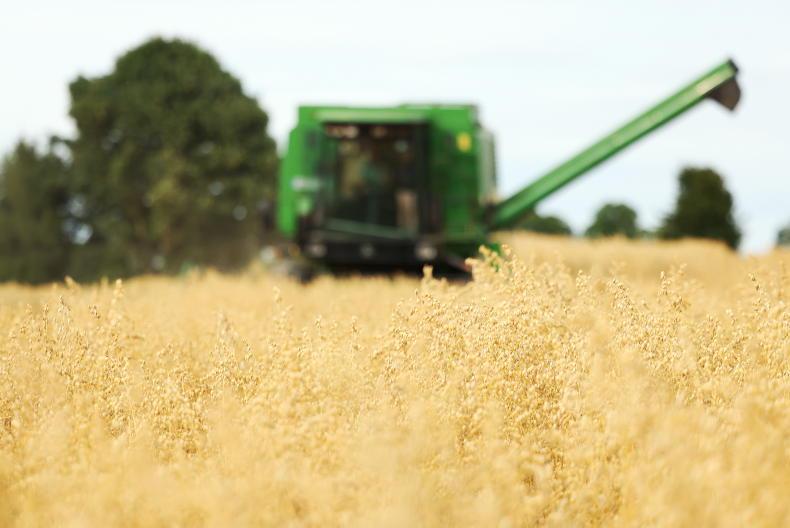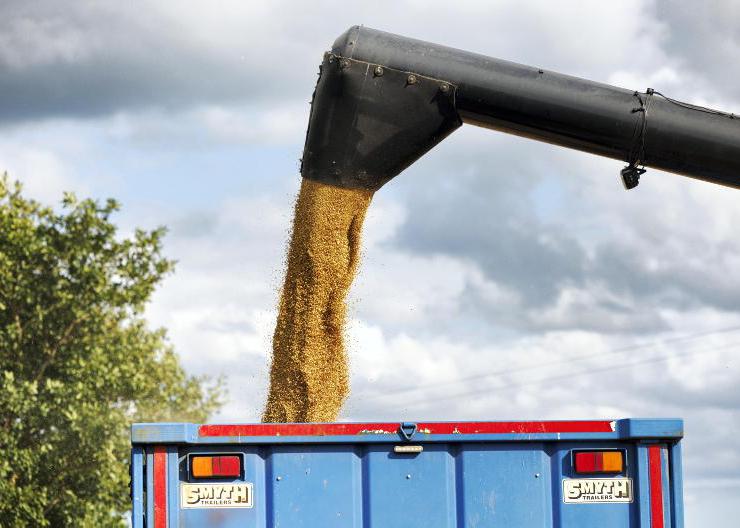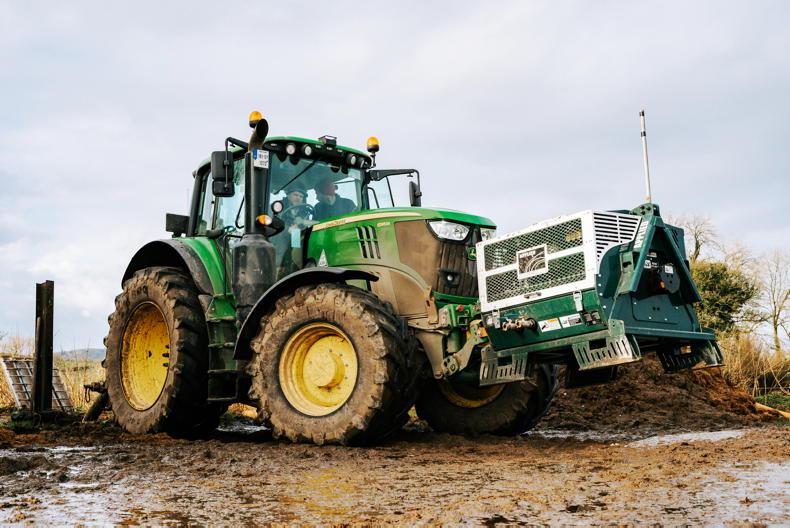Teagasc tillage specialists have released their crop cost and returns estimates for the coming season. It’s very hard to put prices and costs on everything at this time of the year and we don’t know where grain prices will be next harvest.
However, pu tting estimates on costs along with some of the costs you already know will help you to decide what crops to plant and maybe when to sell a small amount of grain throughout the year if prices move to a level you’re happy with.
Your costs will not be the exact same as the ones in the table. This is a guide and the machinery costs are based on contractor charges so if you own your own machinery and do some of your own work then these costs are likely to be lower.
We’ve just gone through a very difficult year for winter crops where many farmers were unhappy with crop yields as a wet autumn led to poor crop establishment, bare patches and thin crops.
It’s early in the planting season, but so far conditions are good for sowing and hopefully this is a good start.
It’s hard to look at break-even yields. It’s much more optimistic to look at target yields, but in reality, we need to know what yields crops need to reach to break even.
If you don’t think you are going to reach those yields then you need to question if that is a crop you should be growing
or if the rotation can be improved to increase your yields.
It should be noted that Teagasc refers to break-even grain yields and straw payments
or sales need to be added in after this. Grain and straw sales are included in the gross margin figures.
It is important to note that these figures do not include costs involved in rented land. They are based on owned land, so
these figures should help to decide if it
is viable to rent land or not.
Winter wheat
Looking at winter wheat and 4t/ac is needed to break even from grain income based on these Teagasc estimates. Many people did not reach 4t/ac last year, but are more likely to reach it this year given current planting conditions are not as bad as autumn 2023. A yield of 4t/ac on winter wheat should be very achievable and higher. In 2023 the average winter wheat yield according to Teagasc was 3.84t/ac, while in 2022 the average yield was 4.5t/ac. This (4.5t/ac) is the target yield outlined by Teagasc in Table 2 and produces a gross margin of €268/ac (€662/ha) once straw income is added in.
Winter barley
Looking at winter barley and the breakeven yield is also 4t/ac from grain income. However, straw will bring in additional income. This is more difficult to achieve than 4t/ac on winter wheat. Winter barley is a temperamental crop. Interestingly in Table 2 Teagasc outlines 4t/ac as the target yield on winter barley and once straw sales or payment are added in it leaves a gross margin of €204/ac (€504/ha). A lot of crops were hit with wet weather and barley yellow dwarf virus last season and a survey of agronomists around the country put the average yield of the crop at 3.2t/ac. The average yield of winter barley in the Teagasc Harvest report for 2022 and 2023 was around 3.5t/ac.
This means many farmers have not been meeting 4t/ac on winter barley in different
growing seasons. That said, many people’s machinery costs may be lower than those listed so this makes the break-even
yield lower. Fertiliser and input costs like fungicides and other nutrition if cut are likely to impact on yield and income.
Winter oats
Winter oats is an a ttractive crop to grow. The break-even yield is 3t/ac. In a difficult 2024 season winter oats averaged 3.6t/ac, according to a survey of agronomists by the Irish Farmers Journal.
In 2023, the average yield from Teagasc was 3.4t/ac and in 2022 the average yield was 3.7t/ac. Oats have lower costs of production compared to other cereals and have been a stand out crop for farmers in recent years.
Winter rye
Winter rye has similar fi gures to winter barley and interestingly again the target yield and the break-even yield are the same. However, many farmers who grow rye get on well with it. It’s a lower risk at harvest time as it holds its quality.
It spreads workload at planting and provided you keep the slugs away and keep on top of growth regulators it is
low maintenance on disease control. You need a market to sell it to and that could be what limits growth of the crop.
Winter oilseed rape
Winter oilseed rape has great potential to give a good return while also providing a break crop in the rotation and helping to increase yield in the following crop.
The target yield for winter oilseed rape is 1.8t/ac. This achievable yield will leave €385/ha once the Straw Incorporation Measure payment is added in.
Cost reduction
The most noticeable reduction in costs is fertiliser. For example, in the 2024 figures fertiliser was costing €498/ha on winter wheat compared to €469/ha now. Plant protection product costs or machinery costs have not changed. Seed has only reduced slightly.
Goldcrop’s Dave Barry explained that there will be a lot of maize with low dry matter yields this year as a result of late sowing. Crops that were not covered are likely to be lower in dry matter. Crops at levels less than 25% are at risk of losses through effluent. At the company’s recent maize and beet open day Dave said, ideally you want to harvest a dry cob
with a cheddar cheese consistency and green leaves.
That dry matter would be 25-30% and preferably at the higher end of that scale.
“This year a lot of crops will be harvested and they won’t have reached that stage.
“As you come back from that you’ll end up with cobs that might be a soft cheese texture, a milky texture or like a lot of uncovered crops have at the moment, a kind of a watery liquid that’s inside in the grain and there’s a lot of sugar in
those plants, so it’s still highly nutritious food.
“It’s just that when you harvest the silage it’s going to end up at 22- 23% dry matter instead of the 28-30% that you want. That nutritious sugar material in there would come out of the pit as effluent if you don’t do something to hang onto it.
“You have to keep the effluent somehow. The easiest way is to put in something like citrus pulp, soya hulls or beet pulp if its available. You’re looking at 50-80kg of pulp or soya hulls per tonne of maize silage
in order to hang onto whatever effluent will be there.”
Dave said that sugar beet pulp is the best thing to absorb that effluent – if it is available. He said that one tonne of sugar beet pulp can soak up approximately 2t of effluent. One tonne of citrus pulp can soak up about 1.6t of that
effluent, while soya hulls can soak up about 1.2t of effluent. Dave commented that 1t of straw will not soak up enough of that effluent and may only take in about 300kg compared to the products above.
It should be noted that those products will be imported, but will not be used in large amounts and will support the use of Irish-grown maize silage.
Dave said ideally crops should be harvested around the 15 October and definitely by the 20-25 October before any frost can damage the leaves of the plant.
Listen to the full interview on the Irish Farmers Journal’s Tillage Podcast by clicking here










SHARING OPTIONS